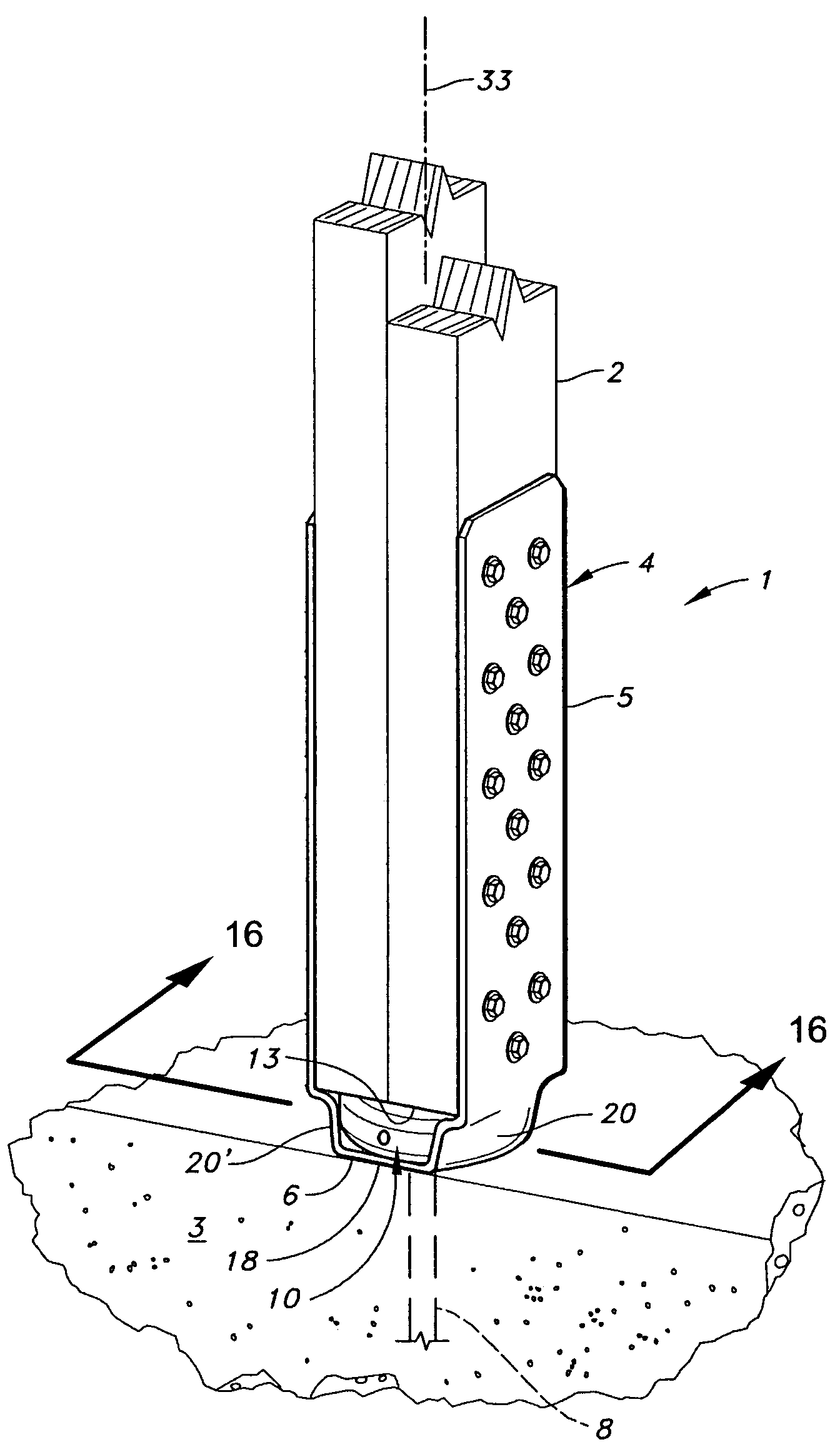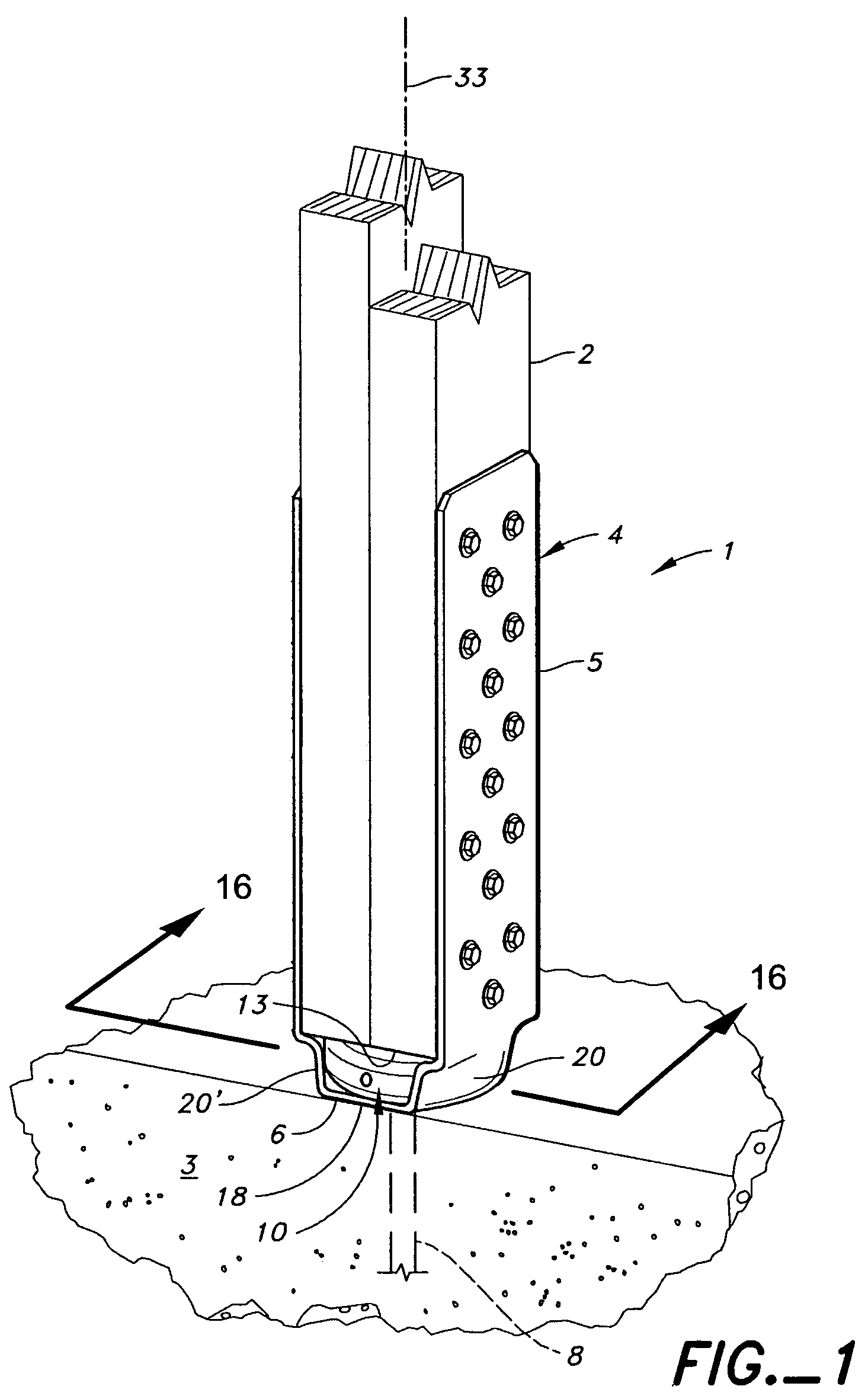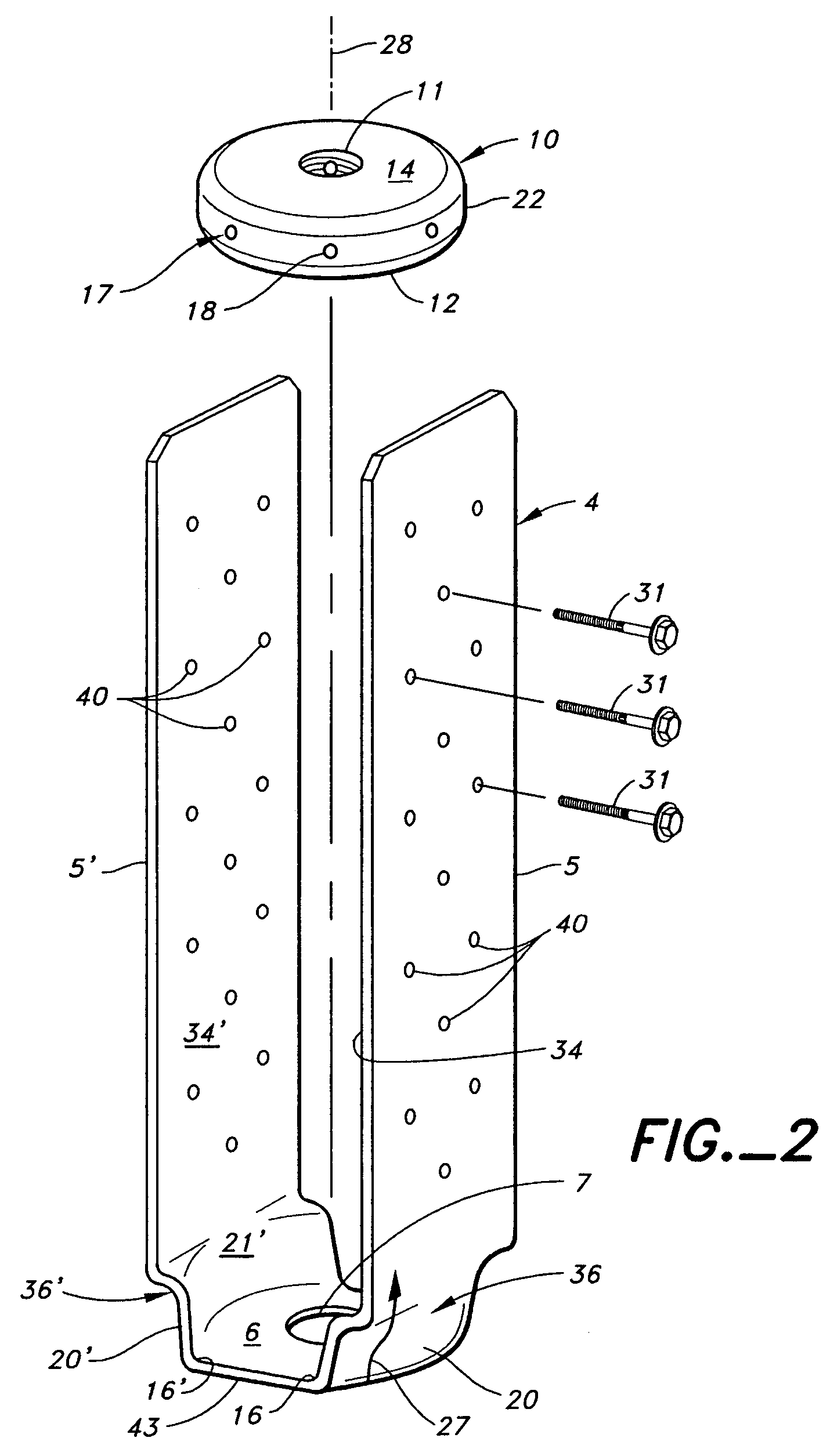Concentric holdown connection
a technology of concentration hold and connection, applied in the direction of buildings, buildings, constructions, etc., can solve the problems of failure of connection, damage to buildings, and difficulty in resisting compression loads, so as to reduce the standoff distance, reduce the racking effect, and reduce the effect of the standoff distan
- Summary
- Abstract
- Description
- Claims
- Application Information
AI Technical Summary
Benefits of technology
Problems solved by technology
Method used
Image
Examples
Embodiment Construction
[0081]As stated in the background of the invention above, Applicant's initial purpose in providing the donut combination member was to reduce the stand off distance of the bottom of the wood column member above the seat of the holdown member; the so called “tower effect”. This objective was reached, but a much more unexpected achievement was obtained; viz., the concentric holdown connection was able to achieve a much higher load value.
[0082]To understand this achievement, it must first be understood that load ratings of holdown members in some jurisdictions such as Los Angeles, Calif. which is an elevated risk earthquake area, are based on the load that can be held before the sheet metal connector elongates in the direction of the load force or deflects ¼″. Applicant found that his concentric holdown using the donut combination member in a 7 gauge holdown with straps was able to achieve a load of 45,030 pounds before exceeding the 0.025″ deflection criteria. This was more than twice...
PUM
 Login to View More
Login to View More Abstract
Description
Claims
Application Information
 Login to View More
Login to View More - R&D
- Intellectual Property
- Life Sciences
- Materials
- Tech Scout
- Unparalleled Data Quality
- Higher Quality Content
- 60% Fewer Hallucinations
Browse by: Latest US Patents, China's latest patents, Technical Efficacy Thesaurus, Application Domain, Technology Topic, Popular Technical Reports.
© 2025 PatSnap. All rights reserved.Legal|Privacy policy|Modern Slavery Act Transparency Statement|Sitemap|About US| Contact US: help@patsnap.com



